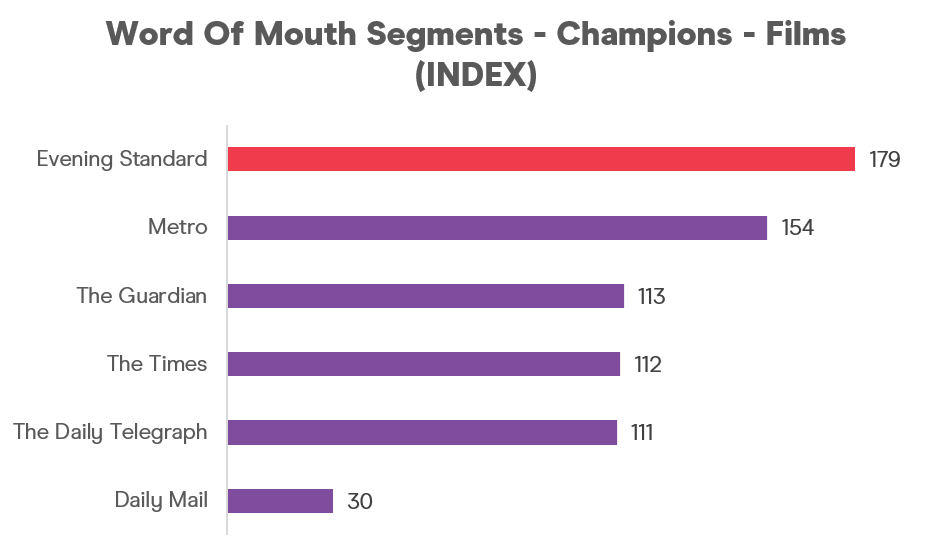- How information flows through society has changed beyond recognition in the 25 years since the internet became available to the average consumer.
Influencing the influencer
How information flows through society has changed beyond recognition in the 25 years since the internet became available to the average consumer.
But despite these huge structural changes, the influence of print media remains incredibly important for driving word of mouth around new launches, products and services. While social platforms have gained large audiences, recent work by UM found that just 4% of net users globally trust what influencers say online(1). Since ground-breaking work from news media a decade ago(2), showing the power of newspaper in fuelling conversations about brands, studies continue to show how ads and reviews create traction for new launches.
So how can brands influence the influencer? Let’s look at some recent work in the entertainment category.
When a new film is reviewed and advertised in a newspaper, it creates a ripple effect, fuelling conversations both prior to viewing and post viewing among friends, family and at work – and also on social media - and, in turn, many of these people talk to their own networks. These influencers are big consumers of media, from which they source information and draw inspiration. According to a report by The Guardian, 90% of UK internet users are influenced by word of mouth in their choice of which film to see at the cinema.
The Canadian behavioural scientist and author, Malcolm Gladwell writing in his seminal work The Tipping Point (first published in 2000), described three specific kinds of people who drive word of mouth, each with a social function. First, there are “Mavens”: people who spend a lot of time reviewing information, especially information about new kinds of products and ideas. Then, there are “Connectors”: people who know a large number of other people, and have a large number of acquaintances. Finally, there are “Salesmen”: people who naturally excel at persuading other people to follow a course of action.
In a similar way, research conducted in the US by COLLOQUY (3) outlines 2 key groups when analysing word of mouth; Advocates : those extremely likely to recommend a product or service and Connectors: a wider range of contacts and communications, but less likely to recommend. Mixing together Advocates (those extremely likely to recommend) with Connectors (those with a wide network of friends and family) creates “WOM Champions”.
TGI allows these Champions to be identified by sector and it’s an area that the Evening Standard shows their significant influence on people’s entertainment choices.

It is an area where Evening Standard’s readers excel. In a recent study from ESI Media, Evening Standard readers indexed 272 in being able to provide a large amount of information about what to watch at the cinema and 1 in 4 stated that they have talked to many different people about it over the past year.
Capturing these influencers, when they are in the mind-set of deciding what to watch at the cinema, also helps fuel conversations. A quarter of Evening Standard readers admitted to thinking about what to watch at the cinema on their evening commute – more than 40% more than the amount thinking about it on their morning journey to work.
The world may have changed, but people still trust their friends and family when it comes to recommendations about how to spend one of their most valuable resources – their free time.


